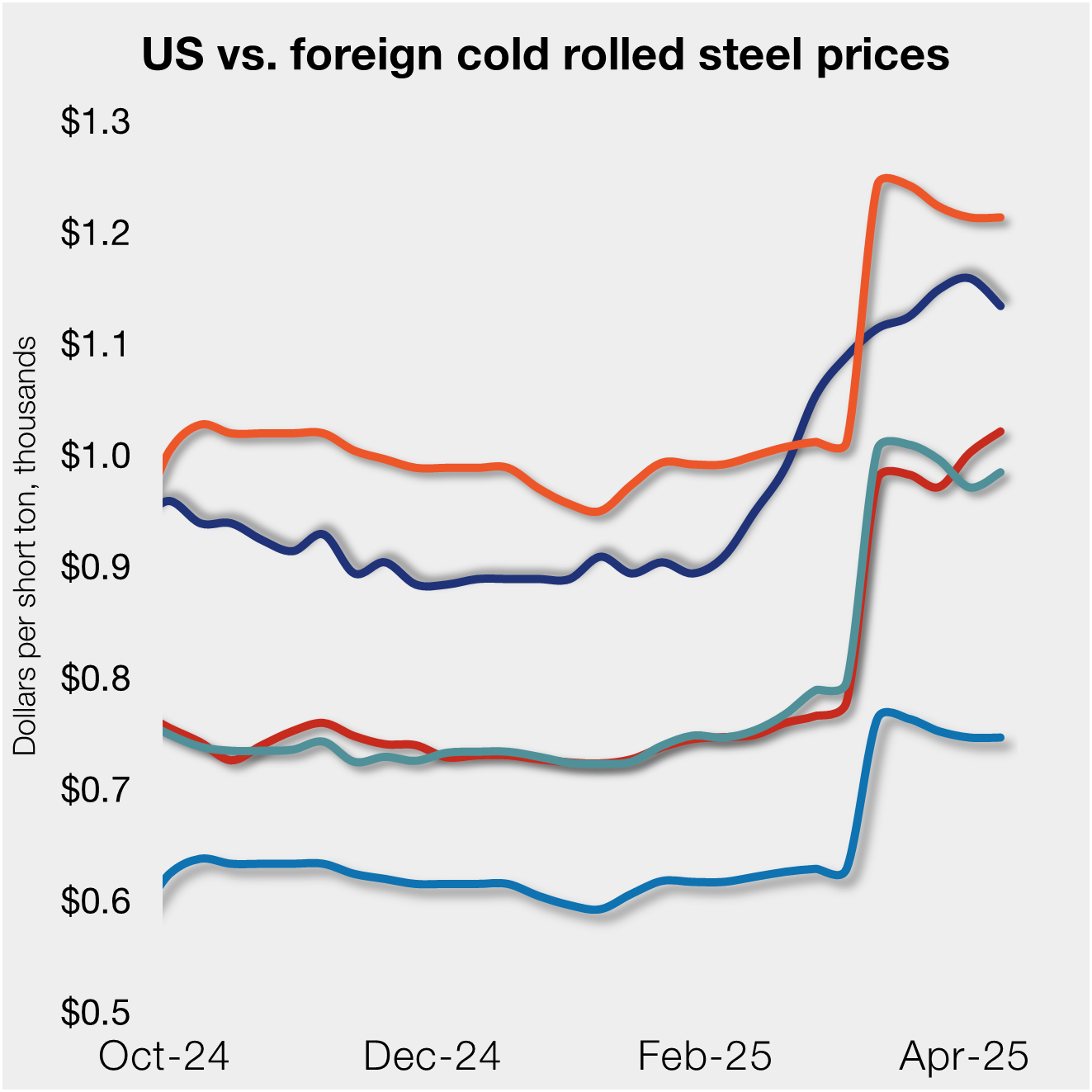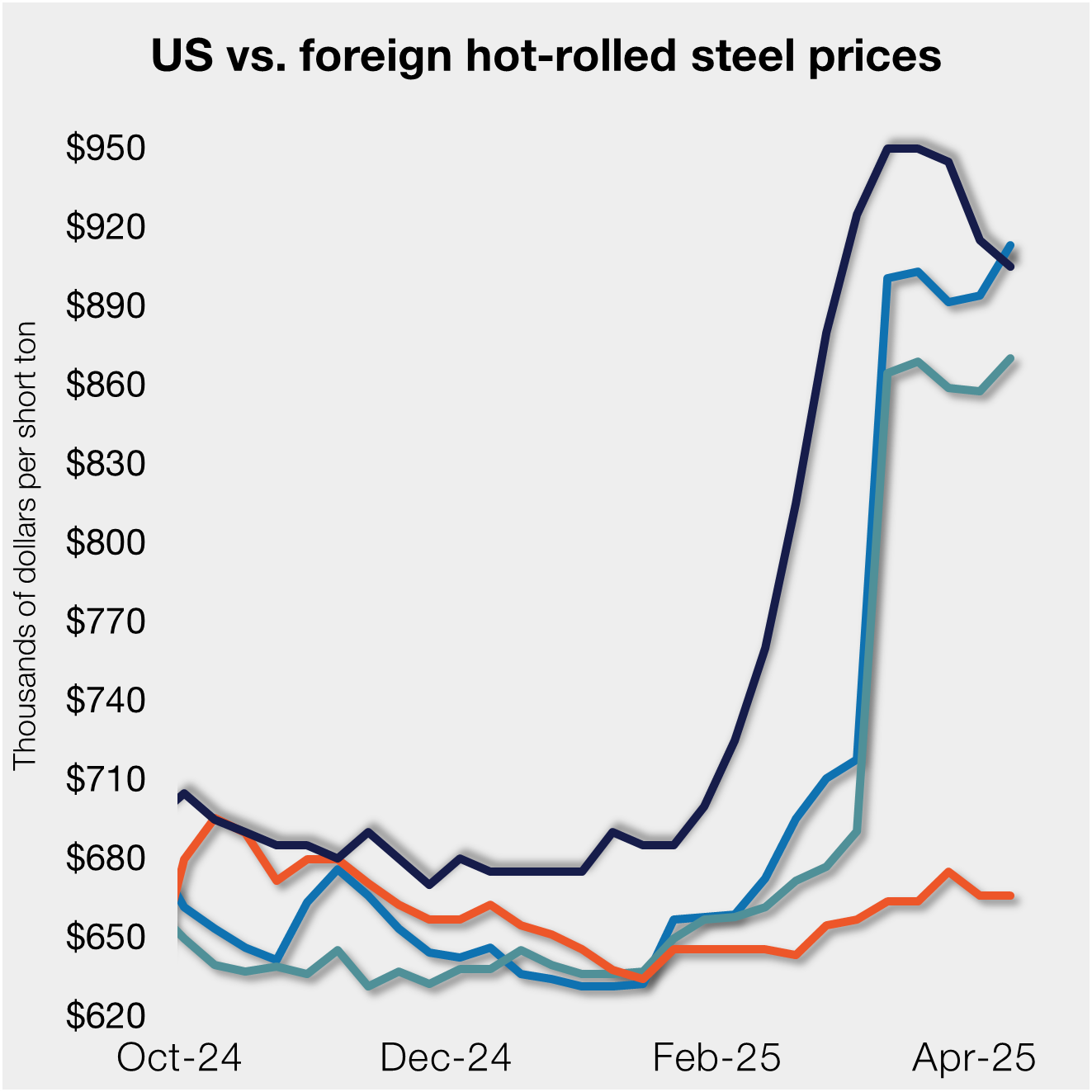Steel Products
Construction Jobs Increase in 26 States in September
Written by Sandy Williams
October 20, 2017
Construction job creation in September was muted due to the recent hurricanes, said the Associated General Contractors of America in an analysis released by the Labor Department on Friday. Twenty-six states added construction jobs between August and September, while 35 states and the District of Columbia added construction jobs between September 2016 and September 2017. Association officials noted that construction employment in many parts of the country would have been higher if more qualified workers were available.
“Contractors in most states still report they are busy and expect to stay that way for the foreseeable future,” said Ken Simonson, chief economist for the association. “These reports suggest employment would be rising in more states if contractors could find enough qualified workers.”
California added the most construction jobs (44,600 jobs, 5.7 percent) during the past year. Other states adding a high number of new construction jobs for the past 12 months include Louisiana (14,700 jobs, 10.6 percent); Texas (14,300 jobs, 2.0 percent); Oregon (13,500 jobs, 14.9 percent) and Florida (12,700 jobs, 2.6 percent). Oregon added the highest percentage of new construction jobs during the past year, followed by Rhode Island (13.7 percent, 2,500 jobs); Nevada (12.6 percent, 9,700 jobs); Louisiana and New Hampshire (10.2 percent, 2,600 jobs).
{loadposition reserved_message}
Fourteen states shed construction jobs between September 2016 and September 2017, while construction employment was unchanged in Idaho. Iowa lost the highest number of construction jobs (-6,600 jobs, -8.1 percent), followed by Missouri (-6,400 jobs, -5.3 percent), Georgia (-6,200 jobs, -3.4 percent) and Illinois (-5,800 jobs, -2.7 percent). Iowa lost the highest percentage for the year, followed by Missouri, Connecticut (-4.3 percent, -2,500 jobs), South Dakota (-3.7 percent, 900 jobs), Georgia and Illinois.
Simonson noted that Hurricane Harvey, which struck Texas and other Gulf Coast states in late August, had probably contributed to a large rebound in construction employment in Texas from August to September. Hurricane Irma hit Florida in mid-September and led to an extreme but probably temporary drop in construction employment there.
Among the 26 states that added construction jobs between August and September, Texas added more than any other state (4,100 jobs, 0.6 percent), followed by Pennsylvania (4,000 jobs, 1.7 percent), Oregon (2,900 jobs, 2.9 percent), Massachusetts (2,700 jobs, 1.8 percent) and California (2,500 jobs, 0.3 percent). Nebraska added the highest percentage of construction jobs for the month (3.6 percent, 2,700 jobs), followed by Oregon, Mississippi (2.8 percent, 1,200 jobs) and Vermont (2.7 percent, 400 jobs).
Twenty-two states lost construction jobs between August and September, while construction employment was unchanged in Indiana, Tennessee and D.C. Florida lost the most construction jobs for the month (-21,000 jobs, -4.1 percent), followed by Georgia (-3,600 jobs, -2.0 percent), New York (-2,900 jobs, -0.8 percent) and Missouri (-2,500 jobs, -2.1 percent). Florida lost the highest percentage of construction jobs, followed by Idaho (-2.9 percent, -1,300 jobs), Connecticut (-2.6 percent, -1,500 jobs), Missouri and Georgia.
Association executives urged elected and appointed officials to take additional steps to encourage young adults to pursue high-paying careers in construction. “Too many students are graduating with skills employers don’t need, while high-paying positions in fields like construction go unfilled as firms search for qualified workers,” said Stephen E. Sandherr, chief executive officer for the association.

Sandy Williams
Read more from Sandy WilliamsLatest in Steel Products

SMU flat-rolled market survey results now available
SMU’s latest steel buyers market survey results are now available on our website to all premium members. After logging in at steelmarketupdate.com, visit the pricing and analysis tab and look under the “survey results” section for “latest survey results.” Past survey results are also available under that selection. If you need help accessing the survey results, or if […]

CRU tariff webinar replay now available
CRU’s latest webinar replay on how Trump’s tariffs affect the global steel market is now available on our website to all members. After logging in at steelmarketupdate.com, visit the community tab and look under the “previous webinars” section of the dropdown menu. You’ll find not only this special CRU webinar but also all past Community […]

US, offshore CRC prices diverge
US cold-rolled (CR) coil prices declined this week, slipping for the first time since early February. Most offshore markets deviated, moving higher this week.

Construction growth slowed in March on tariff woes: Dodge
The decline comes after reaching a record high in January to kickstart the year.

Return of S232 zapped gap between US and EU HR prices, Asian HR remains cheaper
Domestic hot-rolled (HR) coil prices declined this week for a third straight week. Most offshore markets bucked the trend and gained ground. Uncertainty in the US market around tariffs, especially after “Liberation Day,” caused US prices to slip as buyers moved to the sidelines. It’s unclear to date whether the 90-day pause on the more […]
